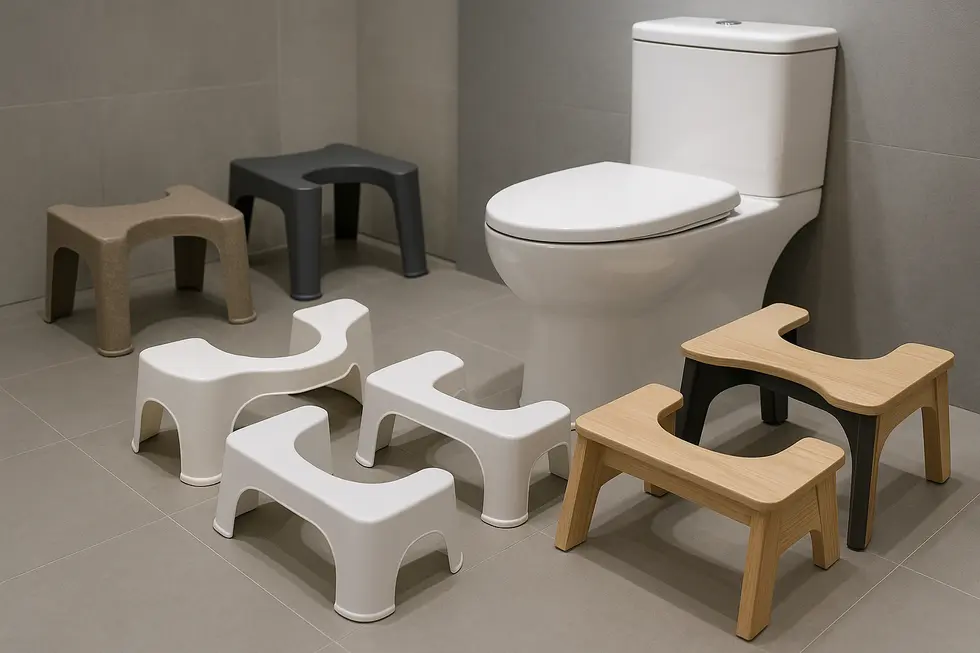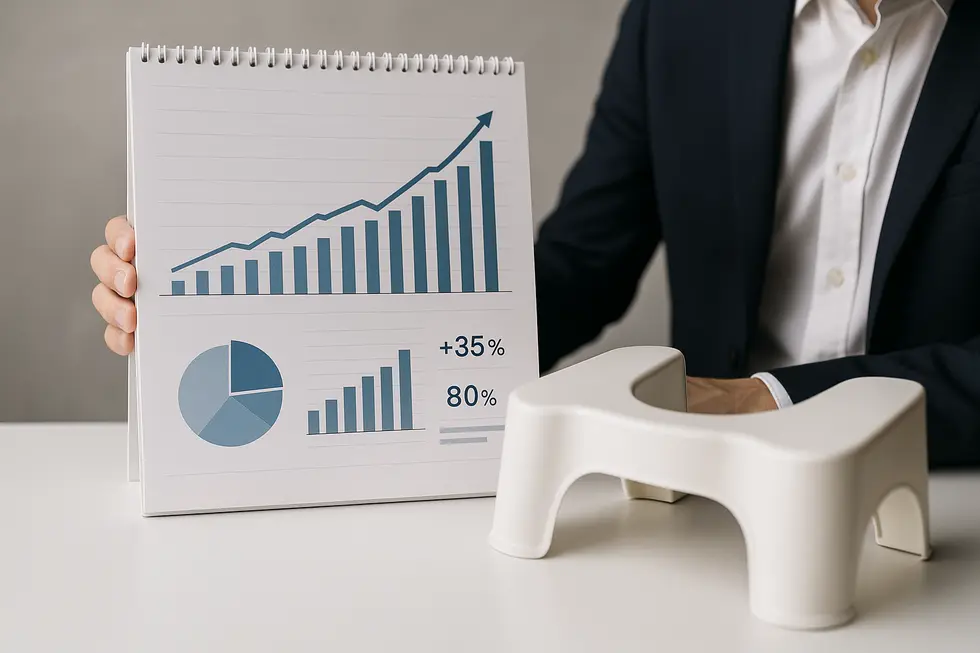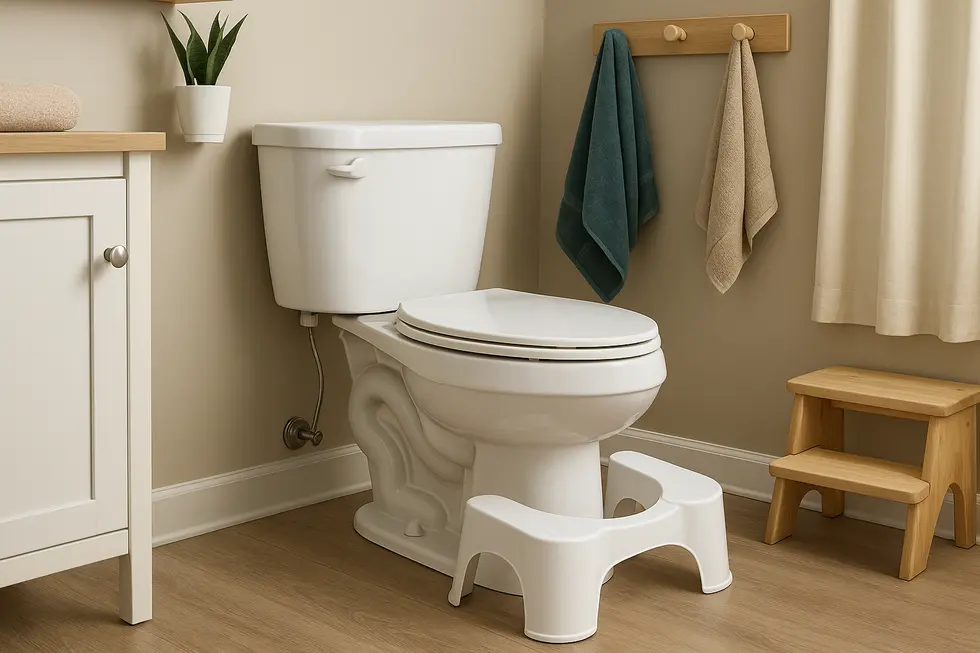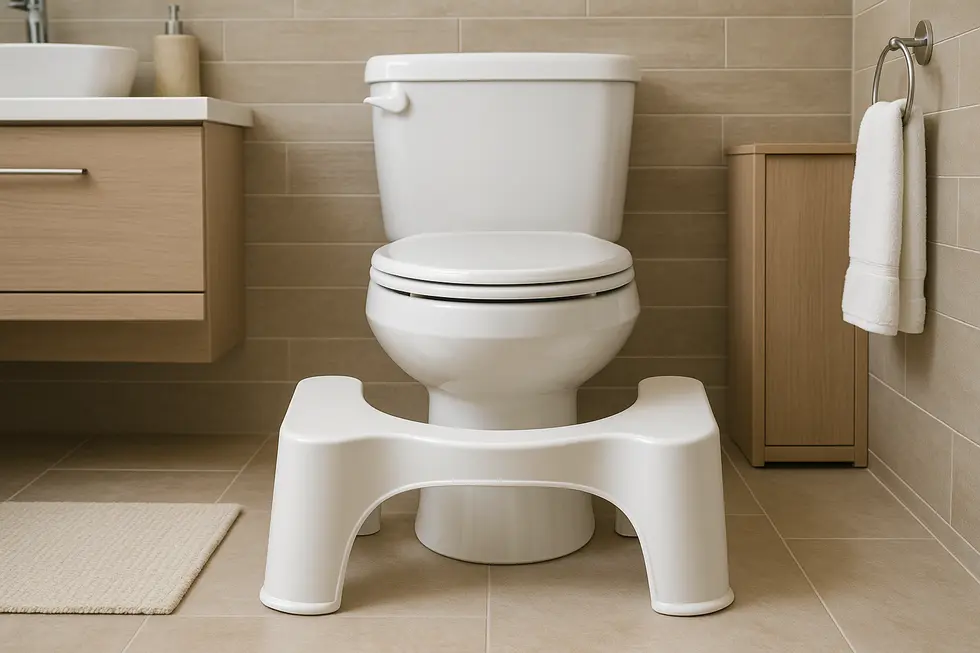Toilet Stools
Elevating Comfort: The Modern Toilet Stool Revolution
Modern toilet stools are more than just a trendy bathroom accessory; they are a crucial component in promoting ergonomics and health, especially for families. By elevating the feet, these stools mimic a natural squatting position, contributing to more effective and comfortable bowel movements. The ongoing innovations in design, coupled with market growth, highlight their increasing importance in households. Each chapter of this article will discuss technological advancements in toilet stool design, analyze economic trends shaping this industry, and explore the societal and health benefits of their daily use, providing a comprehensive understanding of the modern toilet stool’s impact.
From Foot Elevation to Full Intelligence: Innovation Driving the Modern Toilet Stool

The humble footstool that once sat quietly beneath the bowl has evolved into a hub of bathroom intelligence. While its primary task remains simple—raising the feet to recreate a healthy squat posture—engineers now embed the accessory within a wider ecosystem of smart sanitation.
Motion and proximity sensors lead the charge. As a user approaches, lids glide open and night-lights guide safe footing; minutes after departure, the seat reseals itself, curbing germ transfer in shared spaces. Paired foot sensors let you lift only the lid or both lid and seat without bending, protecting spinal comfort while preserving hygiene.
Cleanliness benefits move far beyond soap and elbow grease. High-density foam splash shields line many contemporary bowls, dampening noise and trapping aerosolized particles. Hidden recesses inside the rim release dissolvable tablets with every flush, loosening residue and neutralizing odors before they spread. The result is a stool environment that stays as fresh on day thirty as on day one.
Water usage no longer sacrifices performance. Redesigned siphons create a tight whirlpool that scours porcelain with less than a gallon, cutting consumption by half compared with older fixtures. These savings compound when integrated bidet nozzles replace mountains of tissue; warm-air dryers finish the job, sparing forests and plumbing alike. Independent studies show households can save hundreds of rolls each year, a win for budgets and carbon footprints alike best toilets reference.
Personalization is another frontier. Height-adjustable platforms allow families to fine-tune elevation for children, athletes, or seniors, ensuring the anorectal angle opens properly for each body type. Many of these designs include companion smartphone apps that track usage time and remind users to hydrate—an unexpected but welcome bonus for digestive health. For a deeper dive into this trend, see our discussion on adjustable toilet stool innovations.
Adoption has surged accordingly. In several dense Asian and European markets, integrated smart stools now appear in more than seven homes out of ten. As manufacturing costs fall, similar penetration is forecast across North America, marking the moment when an ergonomic aid officially joins the roster of essential smart-home devices.
From Niche Aid to Billion-Dollar Sector: Economic Momentum Behind Modern Toilet Stools

Barely a decade ago, a toilet footrest was a curiosity found mostly in boutique wellness stores. Today, the concept has fused with smart-home technology and exploded into a global market that mirrors the rapid ascent of bidet and smart-seat segments. Analysts peg the smart toilet seat category at roughly USD 2.38 billion in 2024 with expectations of topping USD 5 billion by 2032—a CAGR near 10 percent. Although those figures track electronic seats, the same consumer forces are lifting non-electronic posture aids: people now view ergonomic elevation as an everyday health measure rather than a novelty.
Multiple tailwinds converge. Heightened hygiene awareness following recent public-health crises has driven households to reevaluate their entire bathroom routine, from touch-free flushing to improved defecation posture. Urban residents, short on space yet long on connectivity, welcome compact stools that slide under the bowl but still pair with app-enabled seats or voice-controlled lighting. Meanwhile, an aging population seeks gentle, preventive solutions for constipation and hemorrhoids, fueling steady demand in North America, Europe, and a fast-growing Asia-Pacific middle class.
Distribution patterns have also shifted. Online marketplaces allow shoppers to compare angles, materials, and sustainability credentials with a swipe, giving emerging brands instant global reach. Market dashboards show that more than 60 percent of stool purchases in 2023 were completed through e-commerce, a channel projected to outpace brick-and-mortar growth twofold over the next five years. Detailed discussions of the sector’s digital surge appear in this overview of the economic potential of adjustable toilet stools.
Investment is following the data. Component suppliers are ramping production of recycled plastics and high-density foams, while woodworkers exploit responsibly sourced timber to satisfy premium décor niches. At the same time, health-tech startups test sensors that may one day embed in the foot platform itself, turning a simple elevation device into a diagnostic node that integrates with electronic seats and wellness apps.
Adjacent safety accessories—anti-slip mats, grab bars, and low-threshold showers—are riding the same demographic wave, suggesting that the bathroom is becoming an integrated ecosystem rather than a collection of standalone fixtures. Stakeholders who once dismissed the humble toilet stool now recognize it as a gateway product to a broader smart-sanitation revolution (see full forecast at Industry Today).
From Private Comfort to Public Health: How Daily Foot Elevation Reshapes Bathroom Well-being

Elevating the feet a few inches transforms a routine trip to the restroom into a subtle act of self-care. By tilting the pelvis forward, a modern toilet stool encourages a posture that straightens the recto-anal angle, letting gravity assist instead of resistance. Users often report quicker, more complete evacuation, and research links this position to lower rates of constipation, hemorrhoids, and flare-ups of irritable bowel syndrome. The reduced straining also protects pelvic-floor muscles, which helps prevent issues such as prolapse and urinary leakage over time.
These changes extend beyond individual comfort. Fewer gastrointestinal complaints translate into fewer doctor visits and prescriptions, easing pressure on healthcare systems already stretched by chronic conditions. Parents who introduce a footstool early raise children who learn efficient, strain-free habits, potentially lowering lifetime risks of colorectal problems. In workplaces, employees spared the discomfort of sluggish digestion lose less time to bathroom breaks or sick days, nudging overall productivity upward.
Modern designs consider diverse needs. A gentle slope guides the feet into position, while high-grip pads stabilize the base even on damp tile. Seniors and people recovering from surgery gain independence, reducing reliance on caregivers and delaying costly transitions to assisted living. Families appreciate that most stools tuck beneath the bowl when not in use, preserving limited floor space and avoiding tripping hazards.
Environmental benefits emerge as well. When elimination is swift and effortless, users often need less toilet paper, cutting both household costs and paper waste. Pairing a stool with a bidet attachment amplifies this eco-friendly impact; readers can explore whether and why toilet stools are worth it for a deeper dive into combined savings.
What makes this accessory truly modern is not just the material upgrade—waterproof covers, closed-cell foams, and recyclable plastics—but the mindset shift it represents. A simple, low-tech object can quietly improve digestive health, enhance safety, and lighten public spending. As more households adopt a foot-elevation habit, the collective payoff grows, illustrating how small ergonomic tweaks can ripple outward into meaningful societal gains. For further evidence on posture-related benefits, consult this external source: https://luxebidet.com/products/luxe-footstool
Final thoughts
Modern toilet stools have become an indispensable element in promoting wellness and ergonomic comfort in family homes. By enhancing posture and improving bowel health, they offer significant benefits that address both practical and health-related challenges. As the market for these innovative products continues to grow, their influence on daily life and family well-being becomes increasingly profound. Embracing these ergonomic enhancements can lead to a healthier lifestyle and an elevated sense of comfort in the family bathroom.
Experience a new standard of clean with PEGABidet—designed for comfort, safety, and independence. Join thousands who trust us to make personal care simple and dignified. Contact us contact@pegabidet.com
About us
PEGABidet is a brand owned by L.A NEXTGEN LLC, based in California. We design intuitive, hygienic, and accessible bathroom solutions that prioritize safety, dignity, and independence. Our mission is to make personal care effortless and empowering for people at every stage of life.

